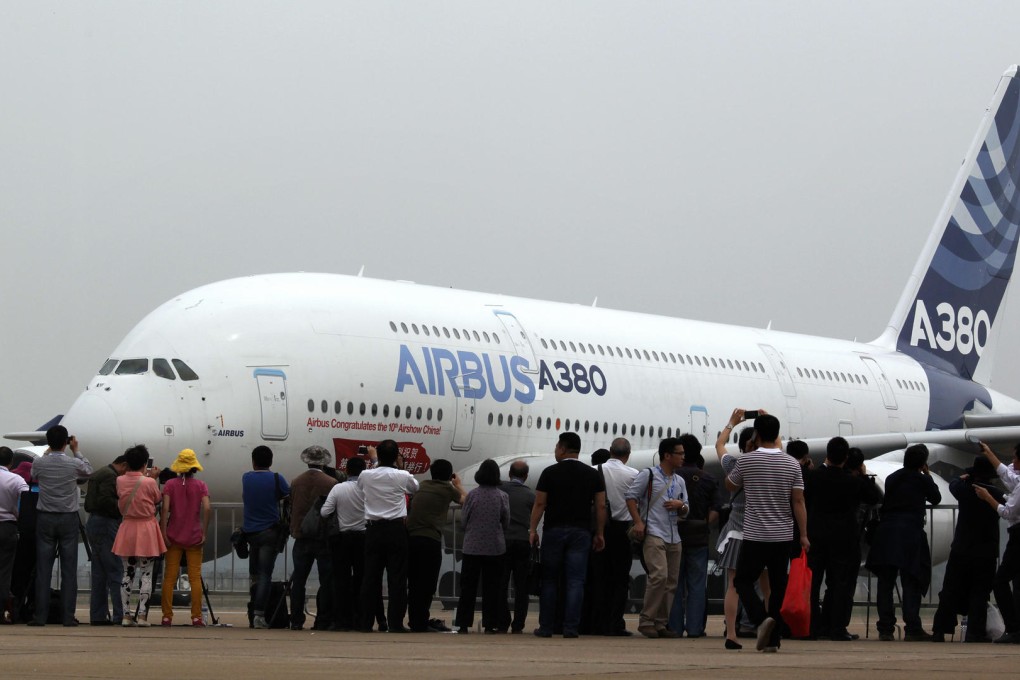Update | Airbus' A380 proves jumbo-sized challenge for global airlines

Lufthansa will boost its capacity between Hong Kong and Europe by 20 per cent from October when it switches to an Airbus A380 on its Hong Kong-Frankfurt route, but the world's biggest passenger plane has not proved a sure-fire winner for all 13 carriers operating the double-decker behemoth.
The German airline will become the eighth carrier to operate A380s in Hong Kong this year, but A380 flights into and out of the city have dropped from a peak of 63 in January last year to between 42 and 55 a month this year, according to the Centre for Aviation.
The superjumbo, operated by 13 airlines around the world, has proved a blessing for some since it entered service eight years ago but a curse for others. The more than 500 passengers needed to fill it can either mean efficient use of a slot with low unit cost, or being stuck with a fuel guzzler burning around US$10,000 worth of fuel an hour.
Saj Ahmad, chief analyst of London-based consultancy StrategicAero Research, said: "Apart from Emirates, there don't really seem to be a lot of success stories to the A380."
China's largest airline, China Southern, the only Chinese A380 customer, says it will deploy the superjumbo on its Beijing-Amsterdam route from this month - its first international A380 route from the home base of rival Air China. While not considered as prime as Beijing-Paris or Beijing-London, the Amsterdam route is a long overdue route out of the capital for China Southern, which has only been allowed to fly domestic routes or international routes into and out of Guangzhou since taking delivery of the first of its five A380s four years ago.
Company insiders say the A380s have been causing the airline losses of "at least 1 billion yuan" (HK$1.2 billion) a year, although the difficulties in filling the seats had eased over the past year.
Will Horton, an analyst with the Centre for Aviation, said: "Clearly China Southern's A380 experience has not gone to plan. The aircraft saw very low utilisation and then were deployed on leisure markets as something of a measure of last resort … the A380's large size makes it challenging to profitably fill. At Emirates you have different economics since you have A380s feeding A380s for transfer traffic - that brings scale."